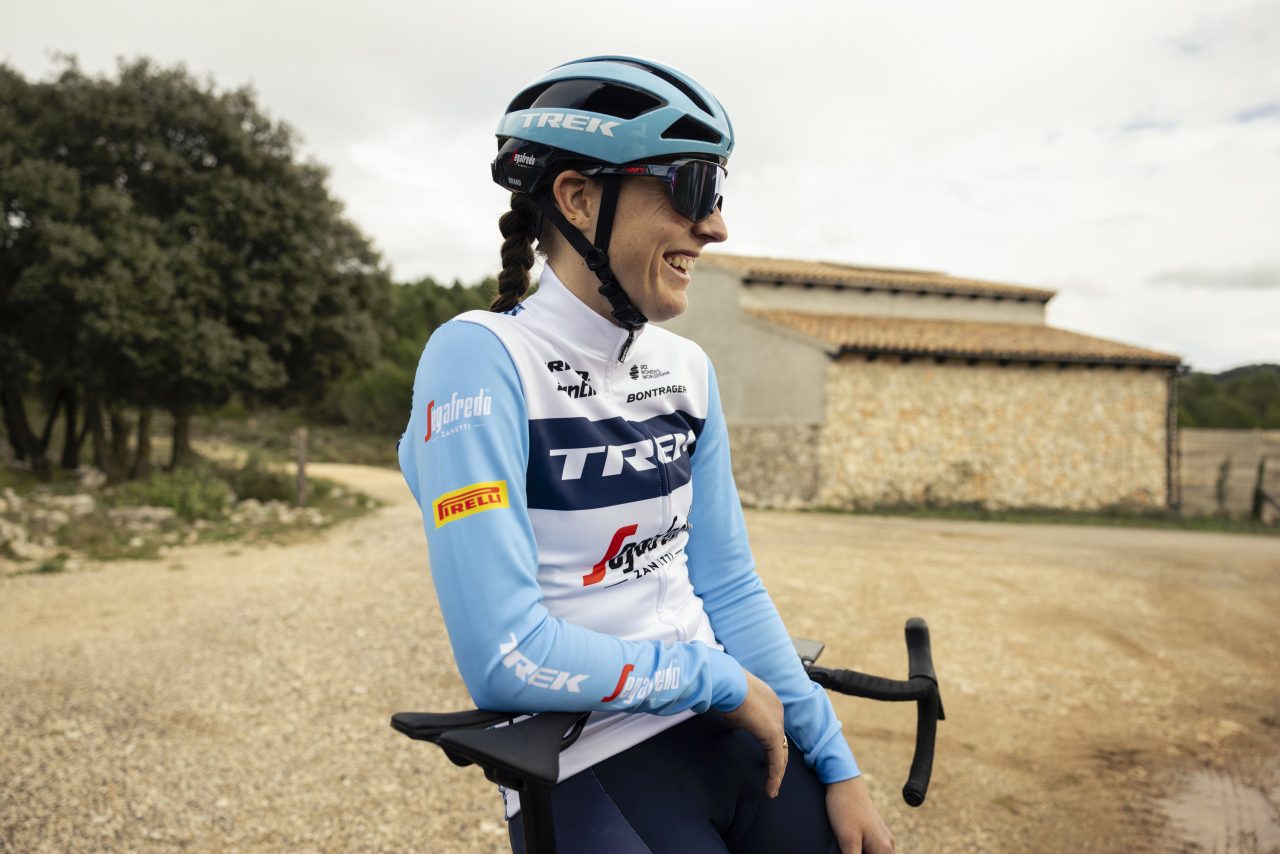Just launched: The new top-of-the-line Trek Ballista and Trek Velocis helmets
Both lids are fast and light, but one is speedier, while the other has less mass
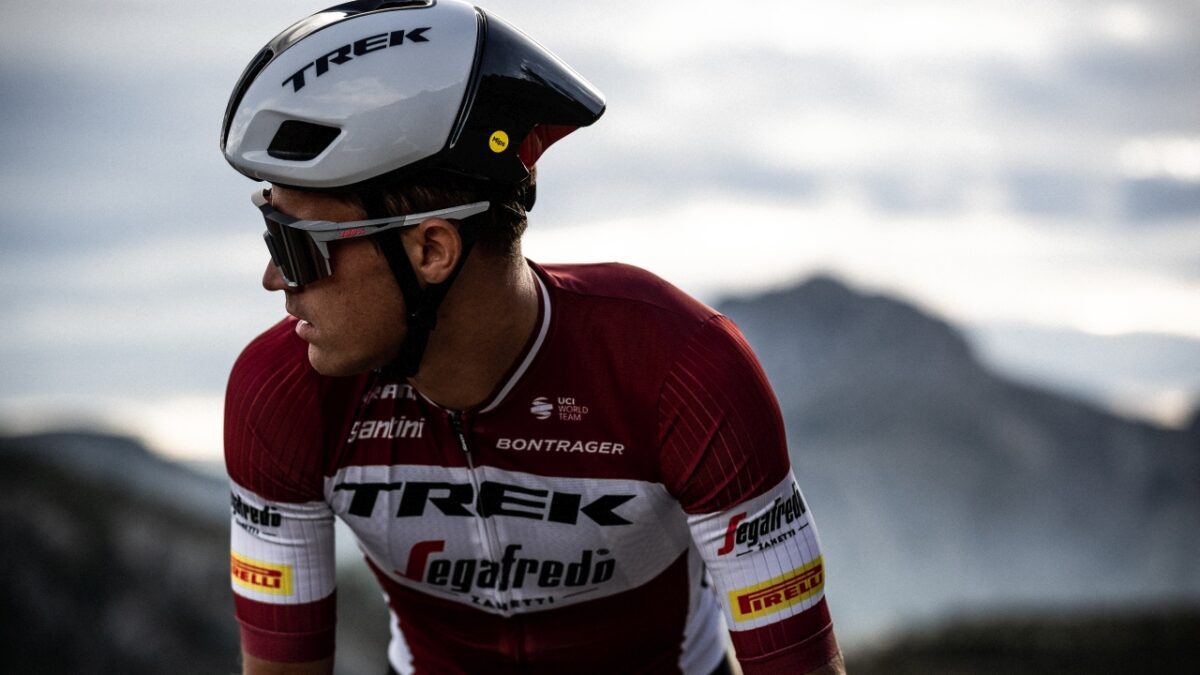
Throughout Mads Pedersen’s spring campaign, the Trek-Segafredo rider has been sporting a new helmet. You no doubt got a good look at it during his 84-km in the break at the Tour of Flanders, not to mention his solo time from 30 km from the finish to the final ascent of Oude Kwaremont. It’s a sleek-looking lid.
The helmet is Trek’s second-generation Ballista. It debuts officially Thursday along with the new Velocis. Both helmets are fast and light, but each has its specialty.
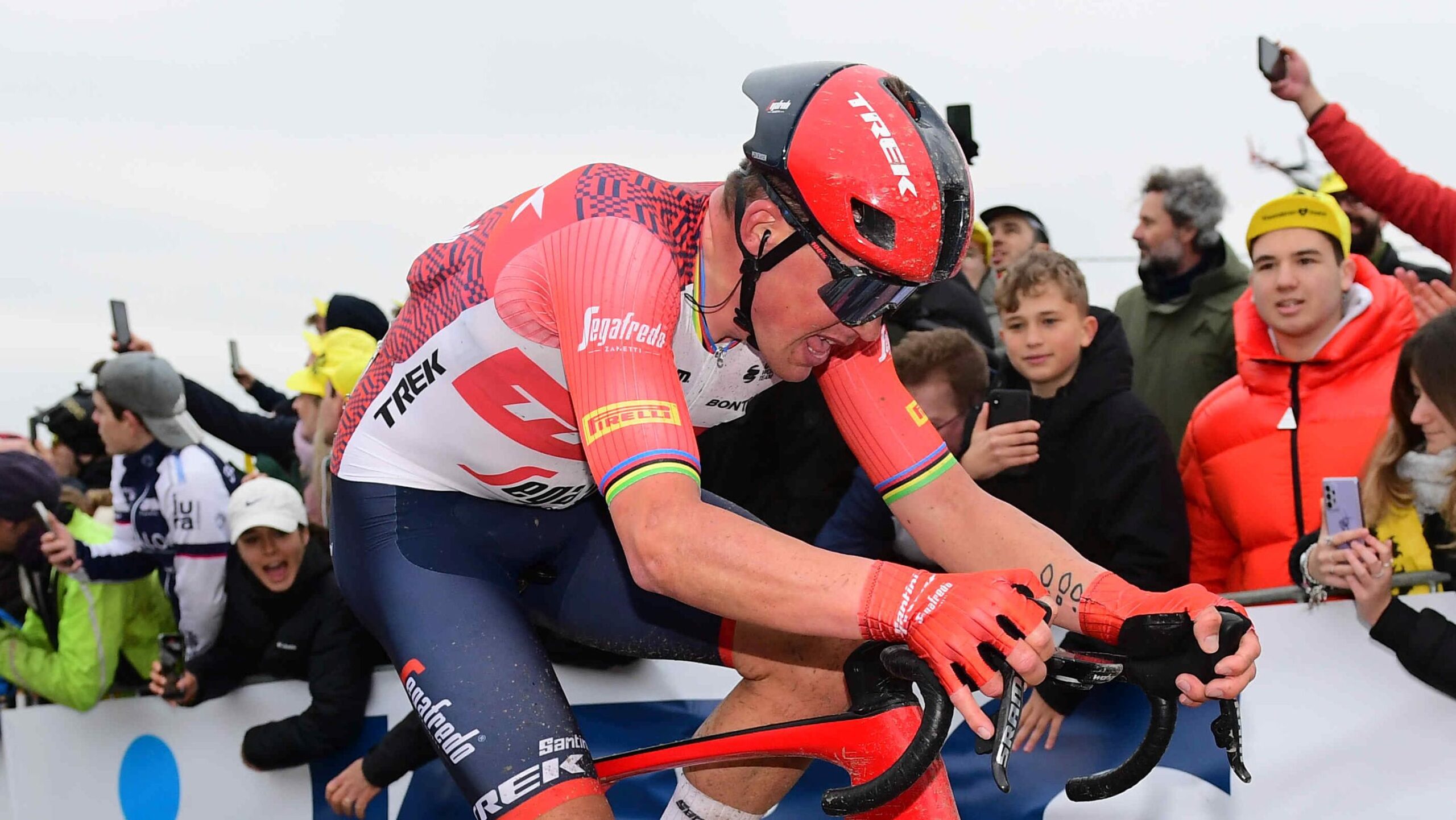
Common features of the Trek Ballista and Trek Velocis helmets
Like most helmets, the Trek Ballista and Trek Velocis are made with an expanded polystyrene (EPS) foam, which provides the bulk of the protection, and a polycarbonate shell. For added protection against rotational forces that can affect a rider’s head in a crash, there’s a MIPS layer. It’s the MIPS Air, to be exact. The perforated polycarbonate layer is lighter and cooler than a standard MIPS insert. Once the pads are placed on the MIPS Air, it’s barely noticeable.
Each lid uses a Boa dial to snug up the fit system.
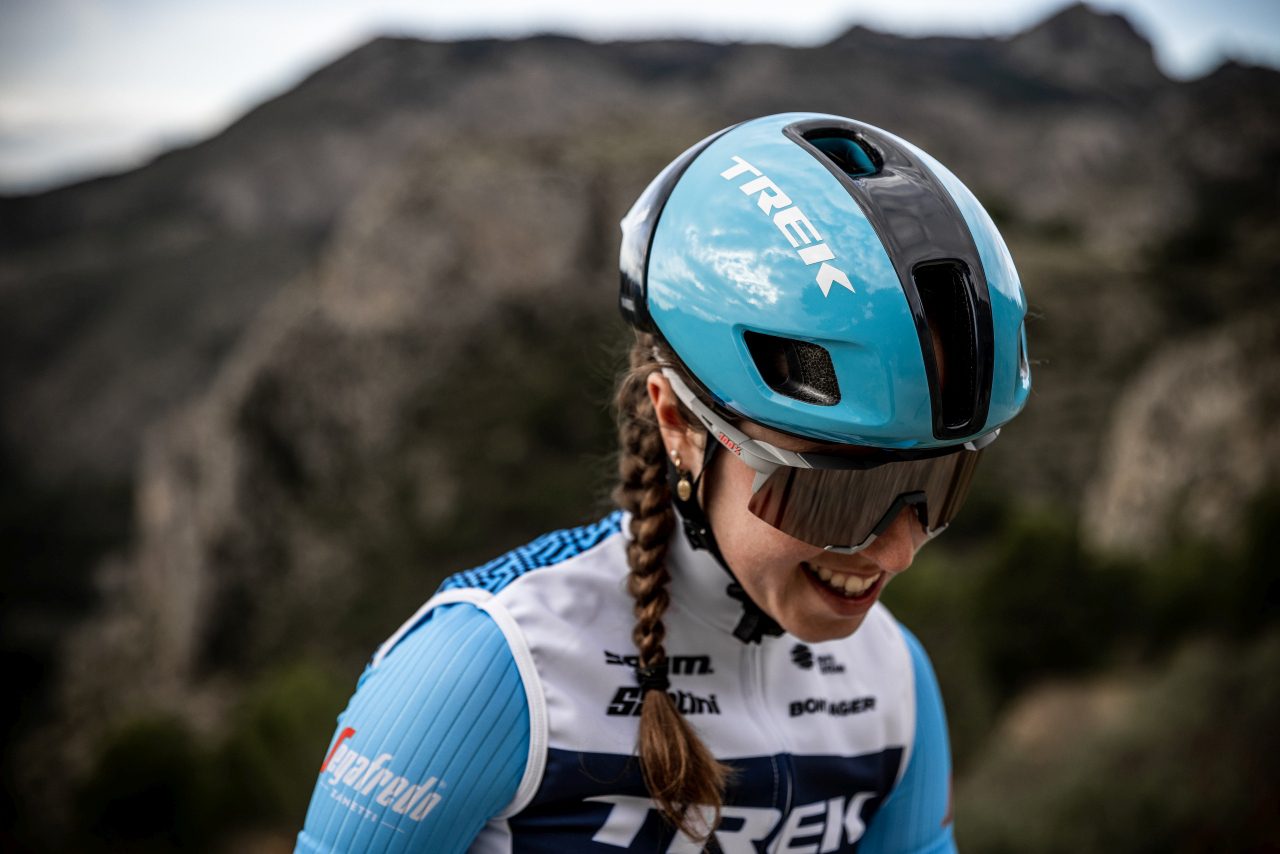
The Trek Velocis and Trek Ballista have bevelled front edges. This design gives you a better view of what’s ahead, even if you are in a tucked, aero position. Since helmets also double as sunglasses storage, just above that bevelled edge, the side vents feature rubber ports for a better grip on your sunnies.
Trek’s helmets have received a five-star safety rating from Virginia Tech. That institution has a facility and system for rating helmets. It recommends any lid with five—the highest rating—or four stars.
The Velocis and Ballista come in three sizes: small (51–57 cm), medium (54–60 cm) and large (58–63 cm). If either helmet is in a crash within its first year of ownership, Trek will send a replacement. The cost of each helmet is $400.
Wait. MIPS? Not WaveCel?
In 2019, Trek introduced WaveCel, a collapsible cellular material, on four of its helmets. It’s since expanded to other lids in the Trek/Bontrager lineup. WaveCel does the same job as a MIPS layer—lessen the effects of rotational forces—but it also absorbs linear forces. Since low weight and efficient cooling were priorities for the Velocis and Ballista, Trek opted for MIPS Air, which allows for better air movement and adds fewer grams than WaveCel.

Ballista, Trek’s new aero helmet
While Pedersen has been wearing the Ballista in road races, the helmet is also at home in velodromes, in time trials, and even at some gravel competitions.
Trek says it is the company’s fastest helmet. How fast? Well, it says the latest Ballista saves you 5.4 W compared with the first-generation model. Up against the new Velocis, the Ballista saves 10.1 W. These improvements were found during an hour test at 45 km/h and 300 W. All that translates into a fast rider gaining 17 seconds by ditching the old Ballista for the new one, or 32 seconds by swapping the new Velocis for the Ballista.
The shape of the Ballista helps to make it faster, as well as the design of the vents. There are four main intake vents facing the front and a fairly open back with two exhaust vents. These ports also work in conjunction with the MIPS Air to make sure your head doesn’t get too warm during hard efforts in the sun.
While the Ballista is designed for speed, it’s no slouch in the weight department. It weighs 275 g, 15 g more than the Velocis.
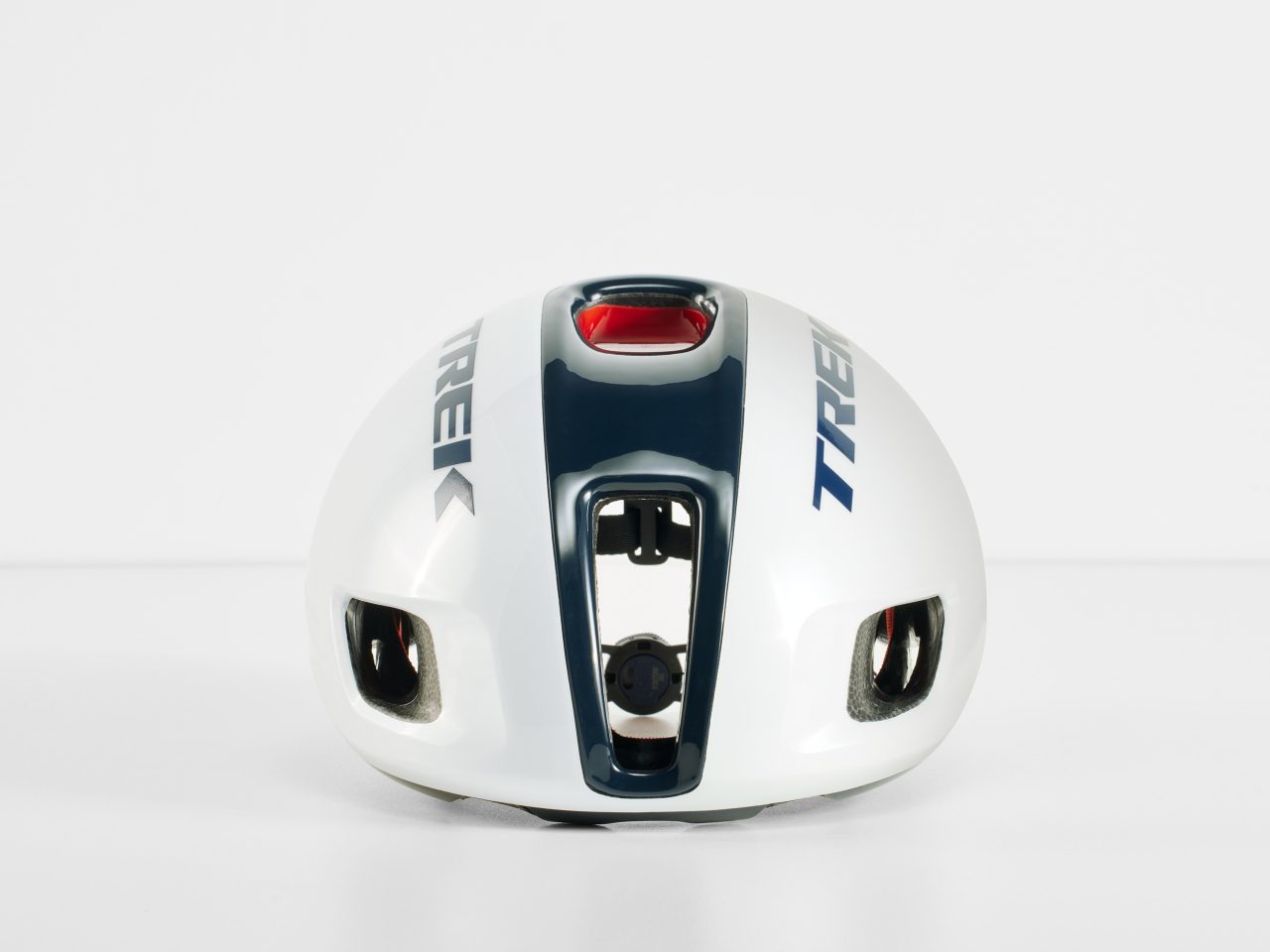
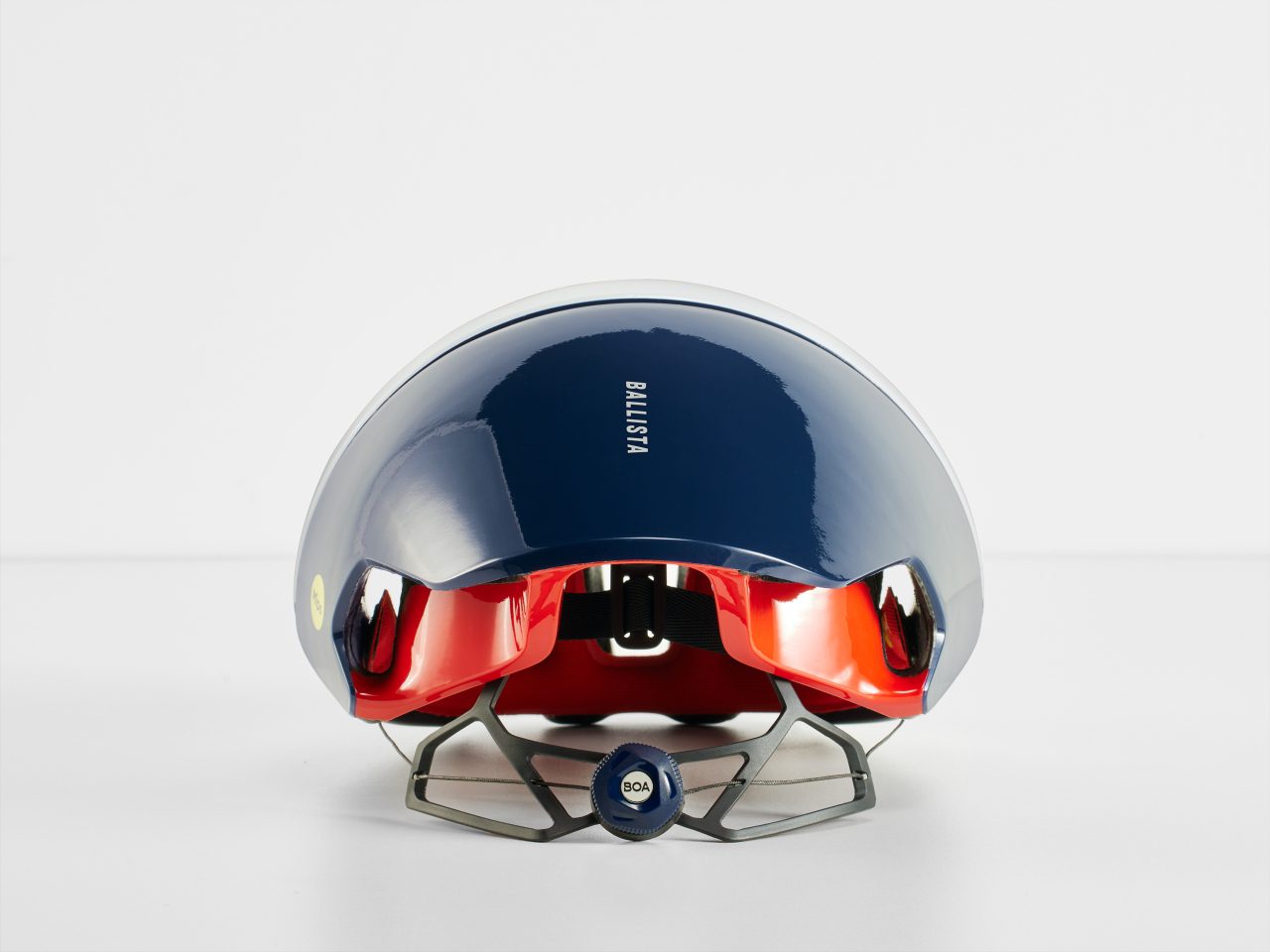

For cool climbs, the Trek Velocis
The third generation of the Velocis is lighter, cooler and more aerodynamic than its predecessor. Even though the Ballista is the prime wind-cheater in the lineup, the Velocis has a new airfoil-shaped bridge for cutting through the air. Trek says the new Velocis is 18 seconds faster than the old one. The airflow within the new helmet is also better, making it 38 per cent cooler.
To help get the lid’s weight to 260 g, Trek used its OCLV carbon along with the EPS and polycarbonate in the helmet’s construction.
The Velocis is the helmet you want for long, hard climbs on the road. Still, it wouldn’t be out of place on an XC course or big gravel ride in the summer.
